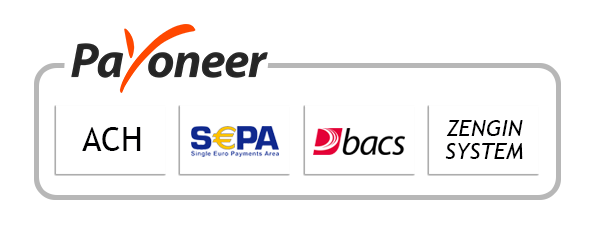
-
Report ID 138307 -
Published Date September 2024 -
Delivery Format PDF/PPT/Word -
Editor's Rating
-
Report Details
Report Overview
The worldwide Semiconductor Market is projected to grow from USD 530 billion in 2023 to approximately USD 996 billion by 2033, achieving a compound annual growth rate (CAGR) of 6.6% from 2024 to 2033.
A semiconductor is a material with electrical conductivity that falls between that of a conductor like copper and an insulator like glass. This property allows semiconductors to control the flow of electrical current, making them essential in modern electronics. Semiconductors are commonly made from elements like silicon or other compounds and are used to create electronic components such as transistors, diodes or integrated circuits, which are fundamental to devices like computers, smartphones, and many other electronic systems.
The semiconductor industry plays a crucial role in powering various electronic devices that we use daily, from smartphones and computers to medical devices and automotive systems. This market is characterized by rapid technological advancements and increasing demand for more efficient and high-performance chips. The continuous innovation in this field is driven by the need to cater to the growing needs of the electronics, telecommunications, and automotive industries, among others.
The demand for semiconductors has seen a significant uptick due to the proliferation of consumer electronics and the increasing integration of electronics in automotive applications. As devices become smarter and more connected, the complexity and requirement for advanced semiconductors continue to rise. The global push towards electric vehicles and renewable energy solutions further fuels the demand for semiconductors that are capable of handling higher power efficiencies and complex computations.
The market is poised for substantial growth trajectory, driven by sectors such as mobile computing, industrial IoT, and healthcare. Innovations like AI, 5G technology, and machine learning are also creating new opportunities for semiconductor applications. The development of smaller, faster, and more energy-efficient semiconductors is expected to be a key trend influencing market growth over the next decade.
The transition towards digitization and smart technologies presents numerous opportunities for the semiconductor market. There is a growing need for semiconductors in emerging technologies such as smart grids, smart homes, and smart cities. Additionally, advancements in semiconductor manufacturing processes like 3D printing and AI-driven predictive maintenance offer opportunities for further market expansion and efficiency improvements. These trends suggest a dynamic future for the industry, filled with potential for innovation and growth.
Key Takeaways
- In 2023, the Integrated Circuits (ICs) segment held a significant lead within the semiconductor market, boasting a market share of 81.3%. This segment’s dominance underscores its critical role in the broader semiconductor industry.
- The Consumer Electronics (Mobile, Computing) segment also maintained a strong position in 2023, securing more than 61% of the semiconductor market share. This reflects the continued high demand for semiconductor components in consumer technology products.
- The Asia-Pacific region is the powerhouse of the semiconductor industry, holding 63.91% of the global market. The region’s robust growth and dynamic market activities are key drivers behind its leading position.
- Despite the strong market positions in certain segments, global semiconductor sales are projected to decrease by approximately 4.1% in 2024, resulting in sales around $634 billion. This decline is primarily due to prevailing economic challenges.
- The market share for semiconductor sales in memory products is expected to rise to 27.9% in 2023, up from 26.3% in 2022. This increase highlights the growing importance of memory components within the industry.
- Semiconductor capital spending is anticipated to see a significant reduction, with a forecasted decrease of 19.7% in 2023, bringing total expenditures down to approximately $92.1 billion. This reduction reflects broader industry adjustments in response to market conditions.
- Semiconductor inventory levels are projected to reach their peak in the second half of 2023, with an expected improvement in market conditions by 2024. This fluctuation in inventory levels is typical of the cyclical nature of the semiconductor industry.
- Looking ahead to 2024, global semiconductor sales are expected to recover, reaching about $588 billion, which marks a 13% increase from the previous year and exceeds the record revenues set in 2022. This rebound indicates a resilient market recovery.
- As of February 29, 2024, Nvidia stands as the leader in the semiconductor industry with a staggering market capitalization of approximately $1,941 billion. Taiwan Semiconductor Manufacturing Company (TSMC) and Broadcom are also key players, with market values of around $660.64 billion and $597.54 billion, respectively.
- Other significant market participants include ASML and Samsung, which hold market capitalizations of approximately $376.41 billion and $367.27 billion, respectively. These companies continue to play vital roles in the semiconductor market’s dynamics.
Semiconductor Device Type Analysis
In 2023, the Integrated Circuits (ICs) segment firmly established its dominance in the semiconductor market, commanding an impressive 81.3% share. This substantial market share underscores the critical role that ICs play in the vast array of modern electronic devices, from smartphones and computers to more sophisticated systems like IoT devices and smart appliances. Integrated Circuits drive the functionality of nearly all electronic systems, making their prominence in the market both expected and significant.
The dominance of ICs is largely due to their versatility and efficiency. These circuits integrate a multitude of electronic components into a small chip, which significantly enhances the performance while reducing the size and energy consumption of electronic devices. As technology advances, the demand for smaller, faster, and more efficient electronic components has soared, further cementing the importance of ICs in the tech industry.
Logic ICs are fundamental components used in devices to perform digital operations, essential for processing data in computers and mobile devices.The Microprocessor Units (MPUs) act as the brain of computers or other devices, executing instructions from the computer’s operating system and applications. Meanwhile, Microcontroller Units (MCUs) are integrated in embedded systems to control the operations of machines and devices, managing tasks designated by embedded software in appliances, automobiles, and more.
Moreover, the ongoing innovation in sectors like telecommunications, automotive, and healthcare, where electronic devices play a pivotal role, continues to drive demand for advanced ICs. The development of technologies such as 5G, autonomous vehicles, and wearable health monitors all rely heavily on the capabilities of integrated circuits to process and manage vast amounts of data at high speeds.
Application Analysis
In 2023, the Consumer Electronics segment, particularly focusing on mobile devices and computing technology, maintained a robust presence in the semiconductor market, securing over 61% of the market share. This significant figure reflects the continuous demand and expansive growth in consumer technology products, driven by a global increase in connectivity, technological advancements, and the digital transformation of everyday life.
The dominance of this segment is fueled by the widespread adoption of smartphones and personal computers, which have become essential tools for communication, work and information.The evolution of these devices has been marked by innovations in semiconductor technology, enabling faster processing, increased storage capacities, and improved energy efficiency. As consumers demand more sophisticated and high-performing devices, semiconductor manufacturers continue to innovate, focusing on smaller, more powerful chips that enhance device capabilities and user experience.
The integration of technologies such as Artificial Intelligence (AI), Internet of Things (IoT), and 5G connectivity into consumer electronics has spurred further growth in the semiconductor industry. These technologies require robust semiconductor support to handle enhanced functionalities and complex computations, pushing the boundaries of what consumer devices can achieve. For instance, AI applications in mobile phones for features like facial recognition and augmented reality are becoming standard, underpinned by powerful ICs and specialized processors.
Looking ahead, the consumer electronics segment is expected to maintain its market prominance, driven by trends such as smart home devices, wearable technology, and the continuous upgrades in mobile and computing platforms. The push towards more integrated and interconnected devices presents ongoing opportunities for semiconductor growth.
In conclusion, as the digital landscape evolves, the Consumer Electronics segment in the semiconductor market will likely see sustained, if not increased, growth and innovation. Manufacturers and stakeholders in the semiconductor industry are poised to benefit from this trend, continually adapting to meet the advancing technological demands of consumers worldwide
Key Market Segments
By Semiconductor Device Type
- Discrete Semiconductors
- Optoelectronics
- Sensors
- ICs
- Analog
- Micro
- Logic
- Memory
- MPU
- MCU
- Others
By Application
- Consumer Electronics
- Mobile
- Computing
- Others
- Telecom & Infrastructure (Servers)
- Automotive
- Industrial
- Others (Healthcare, Defense)
Market Dynamics
Driver: Increasing Demand from Various Industries
The semiconductor market is significantly driven by the burgeoning demand across diverse industries such as automotive, data storage, and wireless communication. Particularly, the automotive sector is steering growth as more vehicles are equipped with advanced electronic systems, including electric vehicles (EVs), requiring high-performance semiconductors to manage everything from infotainment systems to autonomous driving capabilities.
This sector alone is expected to be a major force, with an estimated 70 percent of market growth attributed to automotive applications, alongside data storage and wireless sectors which are expanding due to the rise in mobile device usage and the internet of things.The need for high-performance computing and data storage capabilities, spurred by industries such as telecommunications and IoT, is also a critical driver, reflecting a broader movement towards more technologically sophisticated consumer and industrial products.
Restraint: Supply Chain Disruptions and Geopolitical Tensions
The semiconductor industry faces significant restraints due to ongoing global supply chain disruptions and geopolitical tensions, particularly those involving major semiconductor manufacturing regions like the U.S. and China. These issues complicate the sourcing of raw materials and the distribution of finished products, leading to delays and increased costs.
Additionally, the imposition of tariffs and technology restrictions affects market dynamics, hindering the smooth exchange of semiconductor technologies and products across borders. These challenges underscore the need for strategic adjustments in global supply chain management within the semiconductor sector.
Opportunity: Expansion into New Geographic Markets
The semiconductor industry presents substantial opportunities for expansion into new geographic regions, notably in North America and Europe. This strategic diversification aims to reduce dependency on Asian markets, traditionally dominant in semiconductor manufacturing.
By developing capabilities in these new regions, companies can mitigate risks associated with supply chain disruptions and better align with local market demands and regulatory environments.This move is further encouraged by initiatives such as the EU’s Chips Act, which supports the development of semiconductor manufacturing capacity within Europe, aiming to enhance technological sovereignty.
Moving into new markets also offers semiconductor firms the chance to tap into local talent pools, collaborate with regional tech hubs, and foster innovations that could give them a competitive edge. As digital transformation accelerates worldwide, having a localized presence in multiple markets can enhance a company’s responsiveness to new trends and customer needs, thereby driving growth and strengthening global supply networks.
Challenge: Technological and Operational Challenges in Diversification
While the diversification of manufacturing and supply chains presents opportunities, it also introduces significant challenges. Establishing semiconductor manufacturing capabilities outside traditional hubs in Asia requires substantial investment in technology transfer, training, and infrastructure development. The technological complexities of semiconductor manufacturing mean that new facilities must meet very high standards of precision and efficiency, which can be difficult to achieve quickly. Furthermore, integrating these new operations into the global supply network while maintaining quality and performance standards demands considerable operational expertise and strategic planning.
Growth Factors
- Technological Advancements in AI and IoT: The rapid integration of AI and IoT is fueling demand for advanced semiconductor chips. These technologies, becoming more prevalent in sectors such as automotive and consumer electronics, are driving the need for chips with enhanced functionality. As AI and IoT continue to transform industries, the demand for more sophisticated semiconductor solutions is expected to rise significantly.
- Government Support for Semiconductor Growth: In regions like India, government initiatives play a crucial role in supporting the semiconductor industry. Policies that provide subsidies, incentives, and encourage the establishment of semiconductor manufacturing units are helping to build a robust domestic ecosystem. This government backing is not only advancing the semiconductor sector but also contributing to broader economic growth.
- Demand Surge from the Automotive Sector: The automotive industry’s increasing focus on electrification and automation is driving the need for more complex semiconductor solutions. Trends like Advanced Driver Assistance Systems (ADAS) and modern infotainment systems require cutting-edge chips, leading to sustained growth in this sector. As vehicle technology advances, the semiconductor market is expected to expand further.
- Post-Pandemic Recovery Boosting Key Markets: Economic recovery and expansion in critical markets, such as Malaysia, are driving renewed demand for semiconductors. The global post-pandemic recovery, coupled with the resurgence of manufacturing activities and improvements in trade, is poised to benefit the semiconductor industry, providing a strong foundation for future growth.
- Expansion of Manufacturing Capacities in Asia-Pacific: Asia-Pacific is emerging as a key player in the semiconductor industry, with significant investments being made to expand manufacturing capacities. The region is strategically positioned for growth due to strong local demand and the presence of major industry players. As a result, the semiconductor sector in Asia-Pacific is expected to see substantial development in the coming years.
Latest Trends
- Generative AI Driving Chip Innovation: The growing integration of generative AI technologies is revolutionizing the semiconductor industry, particularly in the development of accelerator chips. These specialized chips are designed to boost the performance of AI applications, providing significant enhancements across sectors such as data centers and personal devices. As AI continues to evolve, the demand for advanced semiconductor solutions is set to increase.
- Advancements in Packaging Technologies: A strong focus is being placed on advanced packaging technologies, particularly 2.5D and 3D packaging, which are critical for improving chip performance and functionality. As high-performance applications grow in complexity, these packaging technologies are becoming essential for meeting the expanding requirements of modern chips. This trend is expected to see substantial growth in the coming years.
- Automotive Semiconductors on the Rise: The automotive sector continues to drive demand for semiconductors, with advancements in ADAS (Advanced Driver Assistance Systems) and infotainment systems. As vehicles become more intelligent and connected, the need for sophisticated semiconductor solutions is increasing. This shift toward smarter vehicles is a significant growth factor in the semiconductor market.
- Expansion of Smart Manufacturing Practices: The adoption of smart manufacturing technologies, such as IoT and digitalization, is reshaping the semiconductor production landscape. These practices are enhancing efficiency and productivity in manufacturing processes, enabling semiconductor companies to meet the rising demand while improving overall operational performance.
- Geopolitical and Economic Challenges: The semiconductor industry is also navigating complex geopolitical challenges, particularly regarding trade restrictions and export controls on advanced technologies. These factors are influencing strategic decisions within the sector, shaping the industry’s approach to manufacturing and global trade.
Regional Analysis
In 2023, the Asia-Pacific (APAC) region solidified its leadership in the global semiconductor market, controlling a substantial 63.91% share. This translated into impressive revenues totaling approximately USD 388.7 billion. The dominance of APAC in this sector can be attributed to several factors, including robust manufacturing capabilities, significant investments in technology infrastructure, and a strong ecosystem of suppliers and manufacturers that drive innovation and production efficiency.
APAC’s leading position is bolstered by the presence of major semiconductor manufacturing hubs in countries like Taiwan, South Korea, and China. These nations have heavily invested in advanced manufacturing facilities that cater to both domestic and international demands. Taiwan, in particular, is home to some of the world’s largest semiconductor companies, which have contributed significantly to the region’s market share. The strategic focus on expanding production capacities and investing in next-generation technologies has enabled these countries to maintain a competitive edge.
The region’s commitment to research and development is another pivotal factor enhancing its market dominance. Governments across APAC have launched numerous initiatives to support the semiconductor industry, aiming to attract foreign investment and bolster technological advancements. These initiatives, coupled with favorable policies and subsidies, have nurtured a conducive environment for growth and development in the semiconductor sector.
North America holds a pivotal role in the global semiconductor market, distinguished by its focus on high-value innovation and the development of leading-edge technologies. One of the key factors contributing to North America’s success in this sector is its strong focus on research and development (R&D). For instance, the United States government has actively supported the semiconductor industry through initiatives like the CHIPS for America Act, which provides financial incentives to encourage domestic semiconductor manufacturing and R&D efforts.
Additionally, collaboration between academia and industry is a hallmark of North America’s approach. Universities such as MIT, Stanford, and the University of California system are involved in cutting-edge semiconductor research, often in partnership with corporate giants like Intel, AMD, and Nvidia. These collaborations help translate academic advancements into commercial technologies that define market trends and gain technological leadership.
Key Regions and Countries
- North America
- US
- Canada
- Europe
- Germany
- France
- The UK
- Spain
- Italy
- Russia
- Netherlands
- Rest of Europe
- Asia Pacific
- China
- Japan
- South Korea
- India
- Australia
- Singapore
- Thailand
- Vietnam
- Rest of APAC
- Latin America
- Brazil
- Mexico
- Rest of Latin America
- Middle East & Africa
- South Africa
- Saudi Arabia
- UAE
- Rest of MEA
Key Players Analysis
The Semiconductor Market is notably fragmented, with numerous significant players operating globally. This fragmentation is driven by intense competition, particularly from well-established market leaders who benefit from strong brands and extensive distribution networks.To secure a foothold in this competitive landscape, major players in the semiconductor industry employ various strategies, including mergers and acquisitions, expanding their product portfolios, increasing their regional presence, and forming strategic collaborations and agreements.
Among these key players,Taiwan Semiconductor Manufacturing Co. Ltd. (TSMC) is a giant in the semiconductor market, renowned for its specialized manufacturing of semiconductor chips. TSMC stands as the world’s largest dedicated independent semiconductor foundry, catering to a broad range of clients who require cutting-edge chip fabrication. The company’s success is built on its commitment to innovation and its ability to keep up with the fast-paced demands of the tech industry, making it a critical supplier for many global tech giants.
Samsung Electronics is another major player, recognized for its significant contributions to both manufacturing and design in the semiconductor industry. Samsung excels in producing memory chips and is a leader in the development of NAND flash and DRAM chips, which are crucial for mobile devices and computing technology. Their constant push for technological advancements ensures their position at the forefront of the semiconductor sector.
Another corporation NVIDIA has carved out a formidable niche in the semiconductor market, primarily known for its graphics processing units (GPU) used in gaming and professional markets. Recently, NVIDIA has also been pivotal in advancing artificial intelligence technologies through its GPU innovations, which are essential for powering AI applications and data centers, positioning NVIDIA as a key technological innovator.
Intel Corporation remains a dominant name in the semiconductor industry, especially noted for its microprocessors that power a vast majority of the world’s personal computers. Intel’s continuous innovation in integrated technology and its aggressive expansion into new areas such as AI and autonomous driving technologies keep it highly relevant and competitive in the ever-evolving semiconductor market.
Top Key Players in the Market
- Taiwan Semiconductor Manufacturing Co. Ltd. (TSM)
- Samsung
- NVIDIA
- Intel Corp.
- Broadcom Inc.
- Qualcomm Inc.
- SK Hynix
- Applied Materials, Inc.
- Advanced Micro Devices (AMD)
- Micron
- Other key players
Recent Development
- In May 2023, Applied Materials announced the creation of the EPIC Center, the world’s largest facility dedicated to semiconductor process technology and manufacturing equipment R&D. This multibillion-dollar investment in Silicon Valley is expected to accelerate innovation in semiconductor manufacturing by shortening the time required to commercialize new technologies.
- In January 2024, TSMC is expanding its advanced packaging capacity with new facilities in Japan, with an estimated investment of $20 billion. This move, in partnership with Sony and Toyota, is expected to bolster Japan’s semiconductor ecosystem and enhance TSMC’s global positioning.
- In April 2024, Samsung introduced its latest semiconductor technology, focused on 3-nanometer process nodes. This launch is part of Samsung’s strategic push to maintain leadership in the semiconductor manufacturing space, particularly for applications in mobile devices and AI-powered platforms. The 3nm technology is expected to improve efficiency and performance, addressing the growing demand for advanced semiconductor solutions.
- In August 2024, Intel announced the cancellation of its planned acquisition of Tower Semiconductor due to regulatory hurdles. The $5.4 billion deal was initially set to bolster Intel’s foundry services as part of its IDM 2.0 strategy. Despite the termination, Intel remains focused on advancing its foundry capabilities with other initiatives.
-
Table Of Content
Research Insights & Deliverables
 Development and Future Forecast
Development and Future Forecast Competitive benchmarking
Competitive benchmarking Company Revenue Statistics
Company Revenue Statistics Rising Regional Opportunities
Rising Regional Opportunities Technology Trends and Dynamics
Technology Trends and Dynamics Technology Assessment
Technology Assessment
-
Inquiry Before Buying
Research Insights & Deliverables
 Development and Future Forecast
Development and Future Forecast Competitive benchmarking
Competitive benchmarking Company Revenue Statistics
Company Revenue Statistics Rising Regional Opportunities
Rising Regional Opportunities Technology Trends and Dynamics
Technology Trends and Dynamics Technology Assessment
Technology Assessment
-
Request Sample
Research Insights & Deliverables
 Development and Future Forecast
Development and Future Forecast Competitive benchmarking
Competitive benchmarking Company Revenue Statistics
Company Revenue Statistics Rising Regional Opportunities
Rising Regional Opportunities Technology Trends and Dynamics
Technology Trends and Dynamics Technology Assessment
Technology Assessment














